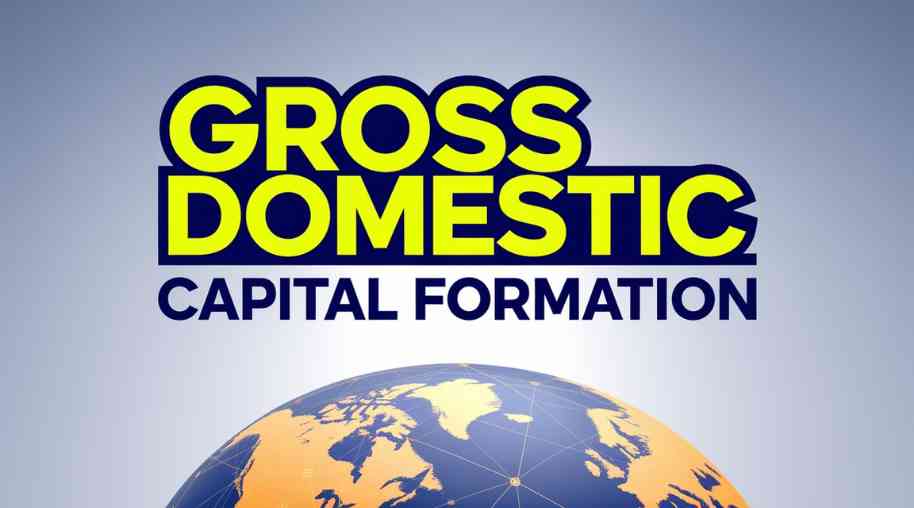GDCF Full Form-Gross Domestic Capital Formation
by Shashi Gaherwar
0 2126
Gross Domestic Capital Formation: A Key to Economic Growth
Introduction
Gross Domestic Capital Formation (GDCF) is a vital economic indicator that reflects the total investment in capital assets within a country over a given period. It represents the accumulation of productive assets such as machinery, buildings, and infrastructure that contribute to long-term economic growth. GDCF is a key component of Gross Domestic Product (GDP) and plays a crucial role in determining a nation's economic stability and progress.

Understanding Gross Domestic Capital Formation
Gross Domestic Capital Formation refers to the increase in a country’s stock of capital assets, excluding depreciation. It includes:
- Gross Fixed Capital Formation (GFCF): Investments in fixed assets such as factories, transportation, and communication networks.
- Changes in Inventories: The net changes in goods and raw materials held by businesses.
- Net Acquisition of Valuables: Investments in non-financial assets like gold and art.
This formation is essential for sustaining and expanding an economy’s productive capacity.
Importance of Gross Domestic Capital Formation
- Economic Expansion and Productivity Growth: Higher GDCF translates into more investment in capital assets, boosting productivity and overall economic performance.
- Infrastructure Development: Investment in transportation, energy, and technology infrastructure enhances efficiency and competitiveness.
- Industrial and Technological Advancement: GDCF supports industrialization and innovation, enabling businesses to adopt modern technologies and expand operations.
- Employment Generation: Higher capital formation leads to job creation in construction, manufacturing, and service industries, improving living standards.
Factors Influencing Gross Domestic Capital Formation
- Government Policies and Economic Climate: Supportive fiscal and monetary policies, along with economic stability, encourage domestic and foreign investment.
- Foreign Direct Investment (FDI): FDI inflows contribute to capital formation by introducing advanced technologies and expanding business opportunities.
- Interest Rates and Credit Access: Lower interest rates and an accessible financial system make borrowing more attractive for investment.
- Business and Consumer Confidence: A strong investment climate encourages businesses to expand and invest in capital goods.
Gross Domestic Capital Formation vs. Savings
While savings represent unspent income, capital formation ensures those savings are converted into productive investments. High savings rates must be matched with efficient investment mechanisms to drive economic growth.
Trends in Gross Domestic Capital Formation Across Economies
Developed Economies:
- High GDCF focused on technological advancements, research, and digital infrastructure.
- Investments in green energy, automation, and AI-driven industries.
Developing Economies:
- Significant capital formation in urban development, industrialization, and essential infrastructure.
- Dependency on government funding and international investments.
Emerging Markets:
- Rapid GDCF growth driven by rising consumer demand and technological adoption.
- Expanding sectors like fintech, e-commerce, and renewable energy.
Challenges in Gross Domestic Capital Formation
- Limited Financial Resources: Developing nations often face low savings rates and difficulty attracting investment capital.
- Economic Instability: Recessions, inflation, and global crises reduce investor confidence.
- Inefficient Resource Allocation: Poor governance and mismanagement lead to unproductive investments.
Strategies to Enhance Gross Domestic Capital Formation
- Encouraging Private Sector Investments: Tax incentives and favorable investment policies can drive business expansion.
- Strengthening Financial Systems: Well-developed banking and financial institutions facilitate capital mobilization.
- Public-Private Partnerships (PPPs): Joint projects between governments and private entities can accelerate infrastructure growth.
- Adopting Digital and Technological Innovations: Enhancing productivity through Industry 4.0 technologies increases efficiency.
Gross Domestic Capital Formation is a critical driver of economic development, influencing productivity, employment, and national progress. By fostering investment-friendly policies and improving financial access, governments and businesses can enhance capital formation, ensuring long-term economic stability and prosperity.
Further Learning Resources
If you’re passionate about building a successful blogging website, check out this helpful guide at Coding Tag – How to Start a Successful Blog. It offers practical steps and expert tips to kickstart your blogging journey!
For dedicated UPSC exam preparation, we highly recommend visiting www.iasmania.com. It offers well-structured resources, current affairs, and subject-wise notes tailored specifically for aspirants. Start your journey today!

Share:








Comments
Waiting for your comments